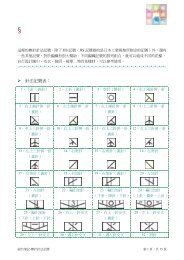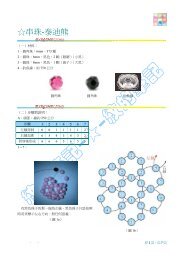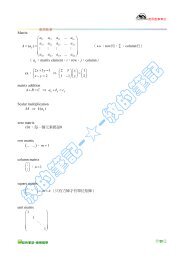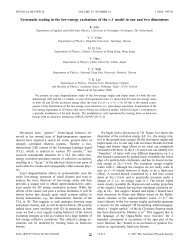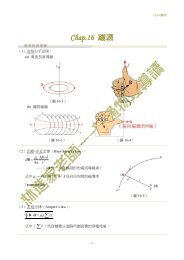Chapter 22 Materials Selection and Design Considerations
Chapter 22 Materials Selection and Design Considerations
Chapter 22 Materials Selection and Design Considerations
You also want an ePaper? Increase the reach of your titles
YUMPU automatically turns print PDFs into web optimized ePapers that Google loves.
Learning Objectives<br />
After careful study of this chapter you should be able to do the following:<br />
1. Describe how the strength performance index<br />
for a solid cylindrical shaft is determined.<br />
2. Describe the manner in which materials selection<br />
charts are employed in the materials selection<br />
process.<br />
3. Briefly describe the steps that are used to ascertain<br />
whether or not a particular metal alloy is<br />
suitable for use in an automobile valve spring.<br />
4. Briefly describe the difference in surface features<br />
(as observed in scanning electron micrographs)<br />
for a steel alloy that (a) experienced a ductile<br />
fracture, <strong>and</strong> (b) failed in a brittle manner.<br />
5. List <strong>and</strong> briefly explain six biocompatibility considerations<br />
relative to materials that are employed<br />
in artificial hip replacements.<br />
6. Name the four components found in the artificial<br />
hip replacement, <strong>and</strong>, for each, list its specific<br />
material requirements.<br />
7. Name <strong>and</strong> briefly define the two factors that<br />
are important to consider relative to the suitability<br />
of a material for use for chemical protective<br />
clothing.<br />
8. Describe the components <strong>and</strong> their functions for<br />
an integrated circuit leadframe.<br />
9. (a) Name <strong>and</strong> briefly describe the three<br />
processes that are carried out during integrated<br />
circuit packaging. (b) Note property requirements<br />
for each of these processes, <strong>and</strong>, in<br />
addition, cite at least two materials that are<br />
employed.<br />
<strong>22</strong>.1 INTRODUCTION<br />
Virtually the entire book to this point has dealt with the properties of various materials,<br />
how the properties of a specific material are dependent on its structure, <strong>and</strong>,<br />
in many cases, how structure may be fashioned by the processing technique that is<br />
employed during production. Of late, there has been a trend to emphasize the element<br />
of design in engineering pedagogy. To a materials scientist or materials engineer,<br />
design can be taken in several contexts. First of all, it can mean designing new<br />
materials having unique property combinations. Alternatively, design can involve<br />
selecting a new material having a better combination of characteristics for a specific<br />
application; choice of material cannot be made without consideration of necessary<br />
manufacturing processes (i.e., forming, welding, etc.), which also rely on material<br />
properties. Or, finally, design might mean developing a process for producing a<br />
material having better properties.<br />
One particularly effective technique for teaching design principles is the case<br />
study method. With this technique, the solutions to real-life engineering problems<br />
are carefully analyzed in detail so that the student may observe the procedures <strong>and</strong><br />
rationale that are involved in the decision-making process. We have chosen to perform<br />
six case studies, which draw upon principles that were introduced in previous<br />
chapters. Five of these studies involve materials that are used for the following: (1)<br />
a torsionally stressed cylindrical shaft (materials selection); (2) an automobile valve<br />
spring; (3) the artificial total hip replacement; (4) chemical protective clothing; <strong>and</strong><br />
(5) integrated circuit packages. The remaining case study discusses the probable<br />
cause of failure of an automobile rear axle.<br />
<strong>Materials</strong> <strong>Selection</strong> for a Torsionally<br />
Stressed Cylindrical Shaft<br />
We begin by addressing the design process from the perspective of materials<br />
selection; that is, for some application, selecting a material having a desirable<br />
or optimum property or combination of properties. Elements of this materials





